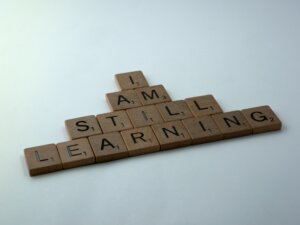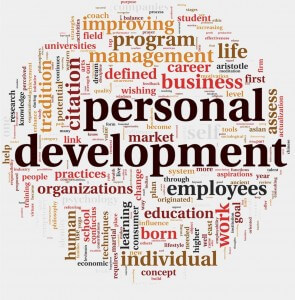Written by Sheri Mazurek | Edited by
Rory Hart
The first step in creating workplace training and learning events is preparation. This may seem obvious, but this step is specific to learner preparation not facilitator preparation. Learner preparation requires the facilitator to take planning steps that will help the learner build connections with the topic, with their goals for the learning, with the other participants, and with the learning outcomes. This stage of the training should occur even before the day of training starts if possible. If not possible, it should occur from the very first moment.
The Benefits of Effective Learner Preparation
- Peak interest in learning
- Removes barriers to learning
- Gives learners a positive emotional connection to the subject
- Removes negative mental state to learning
- Allows learners to connect with other learners
Learners need to know the purpose of the training and what meaning it has for them.
Effective Learner Preparation Helps the Learner identify their own benefits of the learning or training and helps answer the following questions:
- What will I be able to do?
- How will this help me do my job?
Facilitator Steps to Create Effective Learner Preparation
| DO |
Avoid Doing |
Make positive statements about the learning
- You are going to enjoy this topic.
- You are in for a treat today!
- The information you learn today can help you do your job easier.
|
Making negative statements about the learning or session.
- Wow. We have a lot to get through today and not a lot of time!
- This topic is challenging. I hope you can learn it. If not, you will struggle going forward.
- You have to remember all the steps I covered today.
|
Create a positive learning environment
- Use music
- Use colorful charts with key points, pictures, and images that support the key points, toys, displays, and other colorful peripherals
- Instructor costumes
- Create a traditional classroom setup without color.
- Have broken equipment, chairs, or tables.
- Have an environment that is cold or warm
- Have an environment that is dirty
- Not being prepared when the first participant arrives
|
Creating a negative environment:
- Create a traditional classroom setup without color.
- Have broken equipment, chairs, or tables.
- Have an environment that is cold or warm
- Have an environment that is dirty
- Not being prepared when the first participant arrives
|
Start as soon as you can
- Mail or send them a learner prep kit to includes things such as:
- Picture or verbal agenda
- A brief email or letter
- Suggested pre-work
- Websites
- Books
- Articles
- Videos
- Audio clips
- Questionnaire
- A list of information to gather and bring
- Have participants build connections with other learners as soon as possible. This can even start electronically by setting up a blog or wiki. Use topic-related content to develop introductions and connections.
|
Avoid:
- Not communicating with them until they arrive. (whenever possible)
- Start by introducing yourself and then reading them all the rules and objectives for the day.
- Prepare the learners by giving them copies of a PowerPoint Presentation as their only handout.
- Have participants introduce themselves by going around the room and giving their name, rank, and serial number.
- Not having participants interact.
|
Examples of Activities to use to build connections:
- Provide learners with post-notes and have them write one of the following:
- What they want to learn about the topic.
- The most important learning objective (Provide them with the list)
- One or two things that they already know about the topic.
- Once complete, have the learner place the Post-it note on a prepared wall chart.
- Use the same items from the above list, but have learners share with someone in the room. You can use table groups or have the learners mingle around the room taking two or three turns sharing.
- Hold an open house prior to the learning session so participants can get to know each other. If possible have them decorate the room.
- Have learners create a list of questions prior to the session. Have them find participants from previous trainings to provide the answers.
- Call learners ahead of time to welcome them and see what questions they may have.
- Send participants email communications prior to the event with positive suggestions. Include learning objectives.
- Send the learner positive quotations about the topic and have them create a colorful banner or poster to that can be brought to the session to decorate the walls.
- Have topic-related issues posted somewhere in the room with a solution. Have participants stand on a created line (tape, yarn, etc.) with strongly agree with a solution at one end and strongly disagree at the other. Once everyone is in line, debrief the activity by asking reasons for their choice.
- Have the group write their own reservations on an index card. Have them mingle around the room and find a partner. Have them exchange cards with their partner then have them coach each other making suggestions on how the barrier can be removed.
- Have learners write their fears and/or reservations about the topic on cards. Have them share the cards with their group as they drop them into a casket or suspend them from the ceiling.
- Have participants work in teams. Have them list (or provide a list) of barriers one might have about learning the topic. Have them come up with three ways to overcome the barrier.
What other ideas do you have? What can you share?
Sources
http://www.bowperson.com/
http://www.alcenter.com/
—
For more resources, See the Human Resources library.
—
Sheri Mazurek is a training and human resource professional with over 16 years of management experience, and is skilled in all areas of employee management and human resource functions, with a specialty in learning and development. She is available to help you with your Human Resources and Training needs on a contract basis. For more information send an email to [email protected] or visit www.sherimazurek.com. Follow me on Twitter @Sherimaz. |
 Sections of this topic
Sections of this topic
















